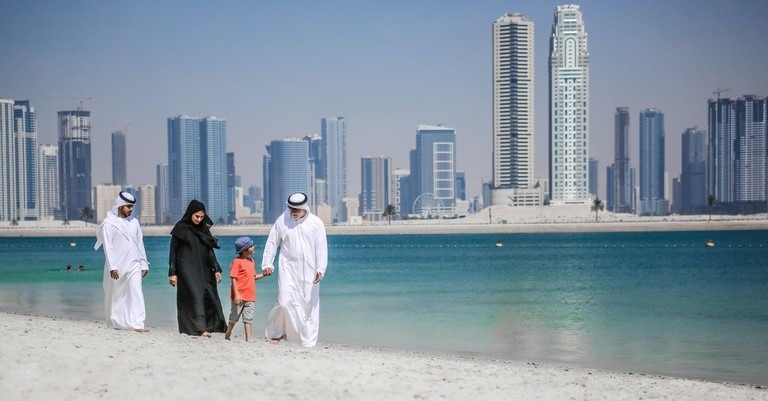The UAE has experienced a remarkable surge in tourism industry sector expansion, with increasing tourist arrivals contributing to the growth of the overall travel industry. Tourism industry growth statistics reveal a robust upward trajectory, highlighting the country’s emergence as a major global destination. Keeping pace with tourism market trends, the UAE has become synonymous with luxury, cultural experiences, and innovative attractions, making it a focal point for travelers worldwide.
Tourism Infrastructure Development
Central to the UAE’s tourism success is the continuous investment in tourism infrastructure development. The construction of hotels and resorts has been a key focus, complemented by significant investments in overall infrastructure, including facilities expansion and airport expansions. These endeavors align with the vision to create a world-class tourism destination, fostering both accessibility and a diverse range of attractions.
Economic Impact of Tourism
The economic impact of tourism in the UAE is substantial, making a significant contribution to the GDP. Beyond economic diversification, the tourism sector has played a crucial role in job creation, revenue generation, and fostering overall economic growth. The multifaceted contributions of tourism have positioned it as a key driver of the UAE’s economic landscape. Tourism revenue and expenditure analysis provide insights into the economic dynamics of the industry. Examining tourism receipts, tourist spending patterns, and the resulting revenue from tourism sheds light on the economic impact of tourist expenditures. These financial contributions play a crucial role in supporting national income and economic sustainability.
Hospitality Industry in the UAE
The UAE’s hospitality industry has witnessed significant growth, characterized by an expansion of hotel accommodation, high hotel occupancy rates, and a thriving luxury tourism sector. The sector’s growth contributes not only to the economic landscape but also positions the UAE as a global hub for high-end tourism. Effective hotel and resort management play a vital role in maintaining the industry’s upward trajectory.
Cultural and Heritage Tourism
Cultural and heritage tourism forms an integral part of the UAE’s tourism appeal. The presence of cultural attractions, heritage sites, and vibrant cultural events and festivals attracts visitors seeking unique experiences. The impact of cultural tourism extends beyond economic considerations, playing a vital role in the preservation of the country’s rich cultural heritage.
Government Initiatives in Tourism
Government initiatives play a pivotal role in steering the direction of the UAE’s tourism sector. From comprehensive tourism strategies to direct government support, the promotion of tourism and the provision of incentives for the tourism industry are evident. Public-private partnerships further amplify the impact of government initiatives, creating a collaborative environment for sustainable tourism development.
Tourism and Real Estate Development
The nexus between tourism and real estate development is evident in the UAE’s landscape, marked by tourism-driven real estate projects, residential developments, and significant real estate investments. The impact of tourism on property markets is a key consideration, influencing the development of infrastructure projects geared towards enhancing the overall tourism experience.
Tourism Challenges and Opportunities
While the UAE’s tourism industry has experienced remarkable growth, it faces challenges such as balancing growth with sustainability and addressing the impact of external factors on tourism demand. These challenges present opportunities for the tourism sector to demonstrate resilience, explore new avenues for expansion, and implement effective crisis management strategies. Here are some interesting facts about the growing tourism industry in the UAE:
- The total contribution of the travel and tourism sector to the UAE’s GDP was AED 159.1 billion (USD 43.3 billion) which is 12.1% of GDP. It is forecast to rise by 4.9% per annum to AED 264.5 billion (USD 72 billion) which would be 12.4% of GDP in 2027.
- The UAE is one of the most visited countries in the world, with 21.3 million international visitors in 2019.
- Dubai is the most popular tourist destination in the UAE, with 16.73 million overnight visitors in 2019.
- The UAE has a diverse range of attractions for tourists, including luxury shopping, world-class hotels, theme parks, cultural sites, and natural wonders.
- The UAE is investing heavily in its tourism infrastructure, with major projects such as the Expo 2020 Dubai, the Abu Dhabi Louvre, and the Dubai Parks and Resorts.
UAE’s Competitive Position in Tourism
Maintaining a competitive position in global tourism is a strategic imperative for the UAE. Evaluating global tourism competitiveness, international rankings, competing destinations, differentiating factors, and implementing effective strategies are essential components of the country’s approach to sustaining its status as a premier tourism destination.
Tourism Industry Future Trends in UAE
Anticipating future trends in UAE tourism industry is critical for staying ahead of evolving tourist behaviors, technological advancements, and preferences. Identifying emerging tourism trends, envisioning the future of travel technology, embracing sustainable tourism practices, and understanding shifts in tourism preferences are key factors shaping the future trajectory of the UAE’s tourism industry.
In conclusion, the UAE’s burgeoning tourism industry stands as a testament to its remarkable growth, driven by strategic infrastructure development, cultural richness, and a commitment to sustainability. With a robust economic impact, innovative marketing, and resilience in the face of challenges, the UAE has solidified its position as a global tourism hub. As the nation navigates future trends and opportunities, its ability to balance growth with preservation and adapt to changing dynamics ensures a promising and enduring trajectory for its thriving tourism sector.






